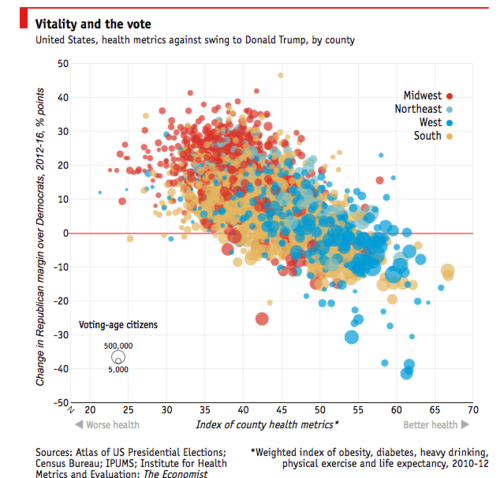Chance News 109
Quotations
From an 1840s letter from Charles Babbage to Alfred, Lord Tennyson, about two lines in a Tennyson poem: “Every minute dies a man, / Every minute one is born.”
“I need hardly point out to you that this calculation would tend to keep the sum total of the world’s population in a state of perpetual equipoise, whereas it is a well-known fact that the said sum total is constantly on the increase. I would therefore take the liberty of suggesting that in the next edition of our excellent poem the erroneous calculation to which I refer should be corrected as follows: ‘Every moment dies a man / And one and a sixteenth is born.’ I may add that the exact figures are 1.167, but something must, of course, be conceded to the laws of metre.”
Submitted by Margaret Cibes
"You can slice and dice it any way you like, but this isn’t like Consumer Reports, which tests something to see if it does or doesn’t work. The interaction between a student and an institution is not the same as the interaction between a student and a refrigerator."
"There is no better way to build confidence in a theory than to believe it is not testable."
Submitted by Margaret Cibes
Forsooth
"The LSAT predicted 14 percent of the variance between the first-year grades [in a study of 981 University of Pennsylvania Law School students]. And it did a little better the second year: 15 percent. Which means that 85 percent of the time it was wrong."
Submitted by Margaret Cibes
“These chemicals are largely unknown,” said David Bellinger, a professor at the Harvard University School of Public Health, whose research has attributed the loss of nearly 17 million I.Q. points among American children 5 years old and under to one class of insecticides.
Submitted by Margaret Cibes at the suggestion of Jim Greenwood
Guide to bad statistics
Our nine-point guide to spotting a dodgy statistic
by David Spiegelhalter, The Guardian, 17 July 2016
Published in the wake of the Brexit debate, but obviously applicable to upcoming US presidential election, the article offers these nine strategies for twisting numbers to back a specious claim.
- Use a real number, but change its meaning
- Make the number look big (but not too big)
- Casually imply causation from correlation
- Choose your definitions carefully
- Use total numbers rather than proportions (or whichever way suits your argument)
- Don’t provide any relevant context
- Exaggerate the importance of a possibly illusory change
- Prematurely announce the success of a policy initiative using unofficial selected data
- If all else fails, just make the numbers up
Submitted by Bill Peterson
Statistical reasoning in journalism education
Bob Griffin set a link to the following:
Chair support, faculty entrepreneurship, and the teaching of statistical reasoning to journalism undergraduates in the United States
by Robert Griffin and Sharon Dunwoody
Did Melania plagiarize?
A physicist has calculated the probability Melania Trump didn't plagiarise her speech
by Fiona MacDonald, Science Alert, 20 July 2016
The reference is to a humorous Facebook post by McGill University physics professor Robert Rutledge. He notes that Trump representative Paul Manafort,had argued in Melania's defense that "it's the English language, there are a limited number of words, so what if Melania Trump chose some of the same ones Michelle Obama did?"
From transcipts appearing in Vox, Rutledge identifies 14 key phrases ("values", "work hard" "for what you want in life", "word is your bond", "do what you say", "treat people with...respect", "pass [them] on to many generations", "Because we want our children", "in this nation", "to know", "the only limit", "your achievements", "your dreams", "willingness to work for them") that appear in both speeches, and observes that they also happen to appear in the same order. But 14! = 87,178,291,200. So even if Melania just happened to choose some of the same words as Michelle, he finds that there is less than one chance in 87 billion that they would appear in the same order.
Discussion
- This is effectively computing a p-value. What assumptions are being made?
- In any case, why is is not "the probability that Melania didn't plagiarize"?
What happened to the polls?
Why FiveThirtyEight gave Trump a better chance than almost anyone else
by Nate Silver, Fivethirtyeight.com, 11 November 2016
Putting the polling miss of the 2016 election in perspective
by Nate Cohn, Josh Katz and Kevin Quealy, 'TheUpshot' blog, New York Times, 13 November 2013
Trump succeeds where health is failing
Daily chart: Trump succeeds where health is failing
Economist, 21 November 2016

Suggested by Peter Doyle